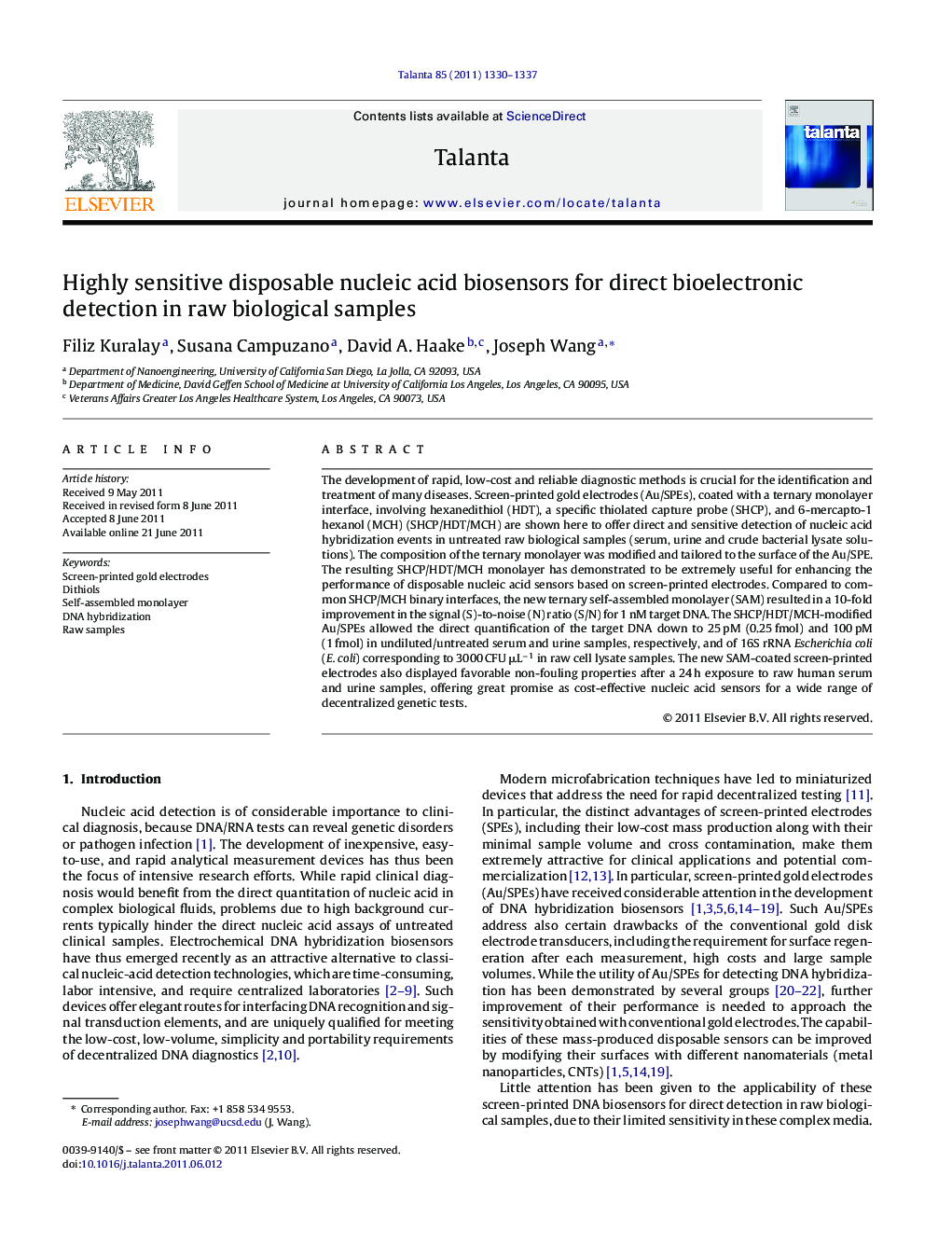| Article ID | Journal | Published Year | Pages | File Type |
|---|---|---|---|---|
| 10560485 | Talanta | 2011 | 8 Pages |
Abstract
The development of rapid, low-cost and reliable diagnostic methods is crucial for the identification and treatment of many diseases. Screen-printed gold electrodes (Au/SPEs), coated with a ternary monolayer interface, involving hexanedithiol (HDT), a specific thiolated capture probe (SHCP), and 6-mercapto-1 hexanol (MCH) (SHCP/HDT/MCH) are shown here to offer direct and sensitive detection of nucleic acid hybridization events in untreated raw biological samples (serum, urine and crude bacterial lysate solutions). The composition of the ternary monolayer was modified and tailored to the surface of the Au/SPE. The resulting SHCP/HDT/MCH monolayer has demonstrated to be extremely useful for enhancing the performance of disposable nucleic acid sensors based on screen-printed electrodes. Compared to common SHCP/MCH binary interfaces, the new ternary self-assembled monolayer (SAM) resulted in a 10-fold improvement in the signal (S)-to-noise (N) ratio (S/N) for 1 nM target DNA. The SHCP/HDT/MCH-modified Au/SPEs allowed the direct quantification of the target DNA down to 25 pM (0.25 fmol) and 100 pM (1 fmol) in undiluted/untreated serum and urine samples, respectively, and of 16S rRNA Escherichia coli (E. coli) corresponding to 3000 CFU μLâ1 in raw cell lysate samples. The new SAM-coated screen-printed electrodes also displayed favorable non-fouling properties after a 24 h exposure to raw human serum and urine samples, offering great promise as cost-effective nucleic acid sensors for a wide range of decentralized genetic tests.
Related Topics
Physical Sciences and Engineering
Chemistry
Analytical Chemistry
Authors
Filiz Kuralay, Susana Campuzano, David A. Haake, Joseph Wang,
